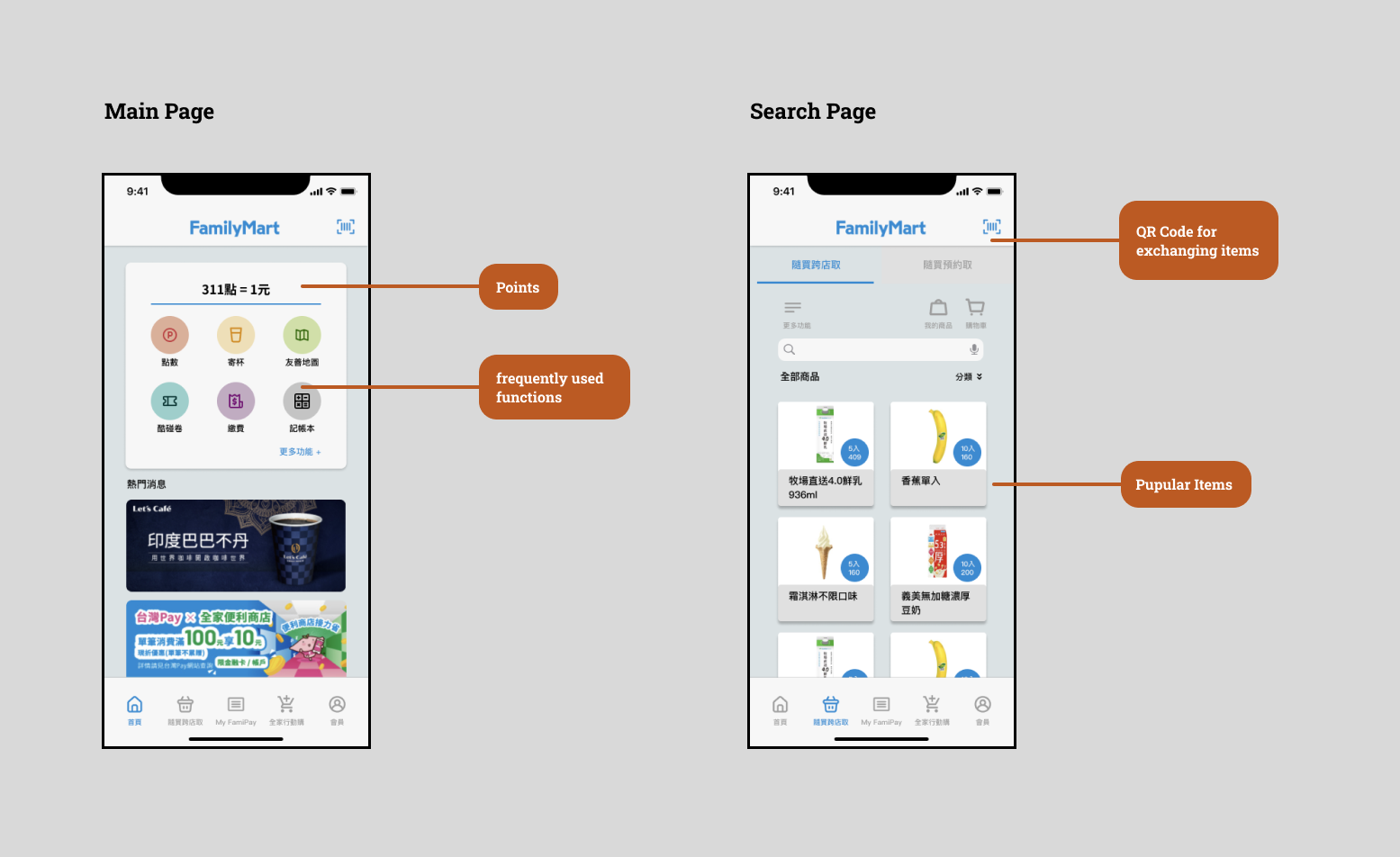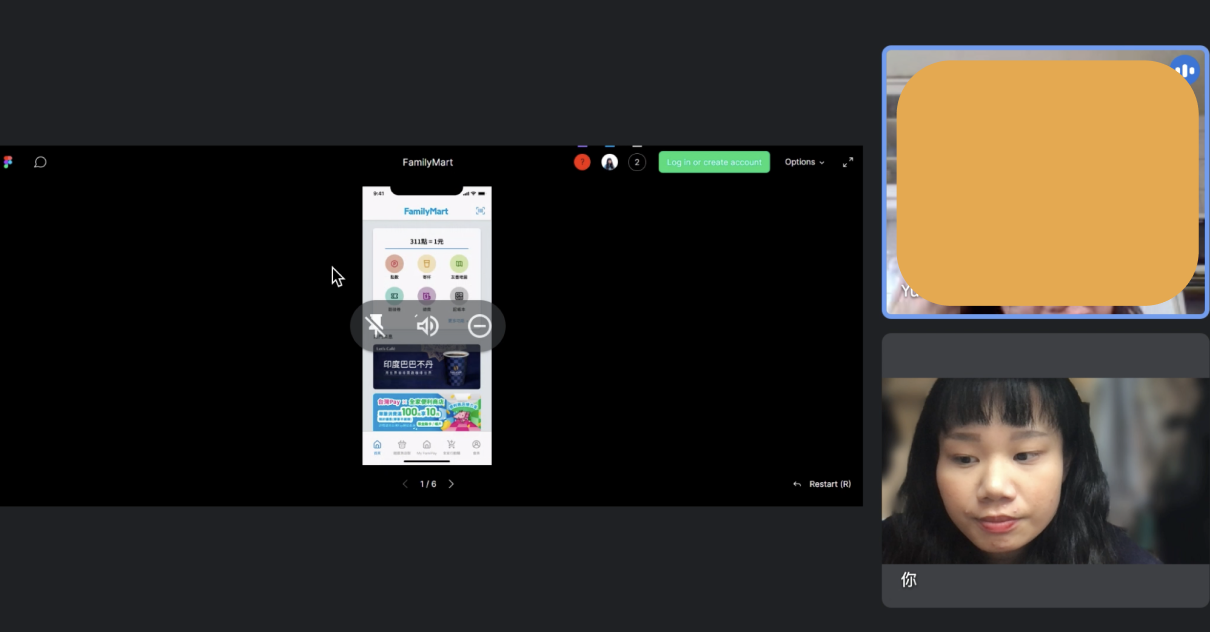Overview
Timespan
May 2021 - Jun 2021
Role
UX Researcher, UX Designer
Disclaimer
This project is a personal initiative and not affiliated with FamilyMart.
Background
FamilyMart is a renowned convenience store brand in Taiwan. Through its app, FamilyMart customers can access up-to-date information, various rewards, and the opportunity to accumulate Famipoints.
Project Goal
The project aimed to enhance the user experience to make the app more profitable.
Result
Identified two key problems: misunderstanding of main page information and difficulties in the process of exchanging drinks. To solve these issues, I redesigned the features and conducted user testing. Ultimately, users provided positive feedback about the redesign during testing.
Design Process
- Understand user flow and pain points through user research.
- Identified key problems.
- Brainstormed solutions to these problems.
- Conducted user testing to gather feedback.
Research
There’re three main parts of research: App Review, Questionnaire and User Interview.
- App Review:
Analyzed app reviews from the past two months (559 on Google Play, 59 on Apple Store) and summarized the common problems:
- The interface is too complicated to use.
- Difficulty in using Famipoints.
- Inability to read all notifications with a single click.
- Questionnaire: Posted a questionnaire on an online forum and collected 1,166 responses within four days.
Questionnaire Goals:
- Understand users’ behavior and frequency of usage for each function.
- Evaluate the usability of each function using a satisfaction scale questionnaire.
- Identify respondents for potential interviews.
According to the questionnaire results, most users frequently use points, the drink exchange feature, and the map function. It also revealed the need for improvements in the main page information and Famipoint functionality.
- User Interview
Interview Goal:
- Understand use cases
- Gain deeper insights into pain points.
Results:
-
The complexity of the interface made it difficult for users to find specific functions.
-
Users struggled to find items for exchange, often requiring assistance from store clerks when attempting to use points.
Design
Design Goal
Informed by the app reviews, questionnaire responses, and user interviews, I considered:
- Feasibility
- Frequency of usage for each function
- Usability of each function
I focused on the two parts to improve
-
Main Page
-
Adjusted the main page layout and animations to enhance clarity.
-
Improved the information architecture to prioritize frequently used and new functions.
-
-
Process of Exchanging Drinks
- Redesigned the layout of the search page to facilitate easier item discovery.
- Enhanced the process of exchanging drinks.
Final Design

User Testing
Method
To evaluate the usability of the prototype, each participant was required to complete the following tasks:
- Find their drinks and attempt to exchange them.
- Purchase a specific item within the prototype.
I observed participants’ actions and responses throughout these tasks and encouraged them to think aloud.

Feedback
-
The new main page is clearer, and I can easily find important functions.
-
It’s quicker to exchange drinks now.
-
It’s helpful to display the number of drinks exchanged.
-
Customers want to know more about sales activities
After Project
While the project has led to significant improvements, there are still areas that warrant further iteration:
- Points Feature: The questionnaire results highlighted the need for improvement in the points feature. However, given the diverse user habits in this function, addressing it comprehensively within the scope of this redesign project proved challenging. Further research and testing are necessary to enhance its usability effectively.
- Content Display: User feedback indicated a desire for more information on sales activities. Incorporating this into the app’s content display could enhance user engagement and satisfaction.
- User Personas: The research project did not include the creation of user personas. Developing personas based on users’ backgrounds and motivations could provide valuable insights for future app enhancements. Understanding the diverse user base more intimately can guide targeted improvements to better meet their needs and preferences.
